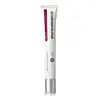What's inside
What's inside
 Key Ingredients
Key Ingredients

 Benefits
Benefits

 Concerns
Concerns

 Ingredients Side-by-side
Ingredients Side-by-side

Water
Skin ConditioningPropanediol
SolventDimethicone
EmollientIsopentyldiol
HumectantSodium Acrylates Crosspolymer-2
AbsorbentButylene Glycol
HumectantGlycerin
HumectantDimethicone/Vinyl Dimethicone Crosspolymer
Skin ConditioningEpilobium Fleischeri Extract
Skin ConditioningAgave Tequilana Leaf Extract
AstringentBarosma Betulina Leaf Extract
PerfumingTocopherol
AntioxidantCitric Acid
BufferingXanthan Gum
EmulsifyingCarbomer
Emulsion StabilisingDimethicone Crosspolymer
Emulsion StabilisingSilica
AbrasiveIsoceteth-10
EmulsifyingHydroxyacetophenone
AntioxidantCaprylyl Glycol
EmollientPotassium Sorbate
PreservativeWater, Propanediol, Dimethicone, Isopentyldiol, Sodium Acrylates Crosspolymer-2, Butylene Glycol, Glycerin, Dimethicone/Vinyl Dimethicone Crosspolymer, Epilobium Fleischeri Extract, Agave Tequilana Leaf Extract, Barosma Betulina Leaf Extract, Tocopherol, Citric Acid, Xanthan Gum, Carbomer, Dimethicone Crosspolymer, Silica, Isoceteth-10, Hydroxyacetophenone, Caprylyl Glycol, Potassium Sorbate
Titanium Dioxide 4%
Cosmetic ColorantZinc Oxide 14%
Cosmetic ColorantCyclopentasiloxane
EmollientCaprylic/Capric Triglyceride
MaskingDimethicone Crosspolymer
Emulsion StabilisingDiisopropyl Adipate
EmollientVinyl Dimethicone/Methicone Silsesquioxane Crosspolymer
Silica
AbrasiveLauryl PEG-9 Polydimethylsiloxyethyl Dimethicone
Skin ConditioningPolyglyceryl-3 Polydimethylsiloxyethyl Dimethicone
Skin ConditioningWater
Skin ConditioningArginine/Lysine Polypeptide
Skin ConditioningCamellia Sinensis Leaf Extract
AntimicrobialPalmitoyl Dipeptide-5 Diaminobutyroyl Hydroxythreonine
Skin ConditioningPalmitoyl Dipeptide-5 Diaminohydroxybutyrate
Skin ConditioningSodium Hyaluronate
HumectantHydrolyzed Soy Protein
HumectantSilanetriol
Hydrolyzed Pearl
Skin ConditioningLavandula Spica Flower Oil
MaskingLavandula Hybrida Oil
EmollientEucalyptus Globulus Leaf Oil
PerfumingSodium PCA
HumectantPolyhydroxystearic Acid
EmulsifyingTriethoxycaprylylsilane
Stearic Acid
CleansingAluminum Hydroxide
EmollientPEG/PPG-18/18 Dimethicone
EmulsifyingPEG/PPG-20/15 Dimethicone
EmulsifyingGlycerin
HumectantPhenoxyethanol
PreservativeEthylhexylglycerin
Skin ConditioningTin Oxide
AbrasiveCI 77491
Cosmetic ColorantCI 77492
Cosmetic ColorantCI 77499
Cosmetic ColorantTitanium Dioxide 4%, Zinc Oxide 14%, Cyclopentasiloxane, Caprylic/Capric Triglyceride, Dimethicone Crosspolymer, Diisopropyl Adipate, Vinyl Dimethicone/Methicone Silsesquioxane Crosspolymer, Silica, Lauryl PEG-9 Polydimethylsiloxyethyl Dimethicone, Polyglyceryl-3 Polydimethylsiloxyethyl Dimethicone, Water, Arginine/Lysine Polypeptide, Camellia Sinensis Leaf Extract, Palmitoyl Dipeptide-5 Diaminobutyroyl Hydroxythreonine, Palmitoyl Dipeptide-5 Diaminohydroxybutyrate, Sodium Hyaluronate, Hydrolyzed Soy Protein, Silanetriol, Hydrolyzed Pearl, Lavandula Spica Flower Oil, Lavandula Hybrida Oil, Eucalyptus Globulus Leaf Oil, Sodium PCA, Polyhydroxystearic Acid, Triethoxycaprylylsilane, Stearic Acid, Aluminum Hydroxide, PEG/PPG-18/18 Dimethicone, PEG/PPG-20/15 Dimethicone, Glycerin, Phenoxyethanol, Ethylhexylglycerin, Tin Oxide, CI 77491, CI 77492, CI 77499
Ingredients Explained
These ingredients are found in both products.
Ingredients higher up in an ingredient list are typically present in a larger amount.
Dimethicone Crosspolymer is a silicone created by modifying dimethicone with hydrocarbon side chains. Due to its large size, it does not penetrate skin. It is considered non-occlusive.
Dimethicone Crosspolymer is used to stabilize and thicken products. It also helps give products a silky feel.
Glycerin is already naturally found in your skin. It helps moisturize and protect your skin.
A study from 2016 found glycerin to be more effective as a humectant than AHAs and hyaluronic acid.
As a humectant, it helps the skin stay hydrated by pulling moisture to your skin. The low molecular weight of glycerin allows it to pull moisture into the deeper layers of your skin.
Hydrated skin improves your skin barrier; Your skin barrier helps protect against irritants and bacteria.
Glycerin has also been found to have antimicrobial and antiviral properties. Due to these properties, glycerin is often used in wound and burn treatments.
In cosmetics, glycerin is usually derived from plants such as soybean or palm. However, it can also be sourced from animals, such as tallow or animal fat.
This ingredient is organic, colorless, odorless, and non-toxic.
Glycerin is the name for this ingredient in American English. British English uses Glycerol/Glycerine.
Learn more about GlycerinSilica, also known as silicon dioxide, is a naturally occurring mineral. It is used as a fine, spherical, and porous powder in cosmetics.
Though it has exfoliant properties, the function of silica varies depending on the product.
The unique structure of silica enhances the spreadability and adds smoothness, making it a great texture enhancer.
It is also used as an active carrier, emulsifier, and mattifier due to its ability to absorb excess oil.
In some products, tiny microneedles called spicules are made from silica or hydrolyzed sponge. When you rub them in, they lightly polish away dead skin layers and enhance the penetration of active ingredients.
Learn more about SilicaWater. It's the most common cosmetic ingredient of all. You'll usually see it at the top of ingredient lists, meaning that it makes up the largest part of the product.
So why is it so popular? Water most often acts as a solvent - this means that it helps dissolve other ingredients into the formulation.
You'll also recognize water as that liquid we all need to stay alive. If you see this, drink a glass of water. Stay hydrated!
Learn more about Water